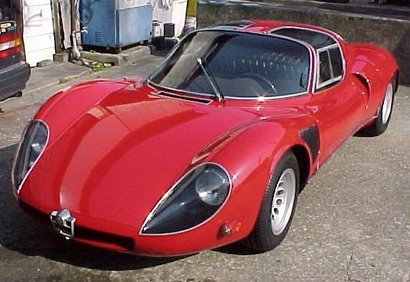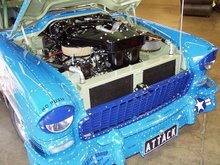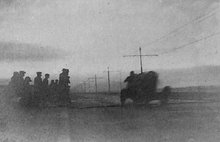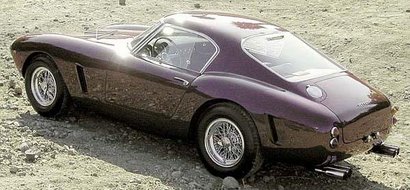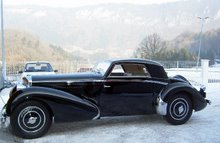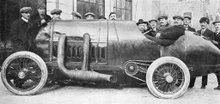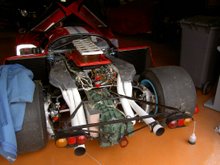Those of you who have followed some of my meanderings on this blog will know by now that I am a great enthusiast not only for the Fulvia but also both of the history of its development and my own and others’ experiments.
What I have called “The 1486 Project” has fairly straightforward origins. A close friend (“Justin”) with whom I shared a lock-up garage for many years had like me, a 1967 S1 Fulvia. And like me, he acquired his car in a condition that meant for a rational person, the scrap yard was the only sensible destination. Later on, he began to modify, fitting 1600 front suspension and steering box, a five-speed gearbox, and finally a 1600 engine. This engine had been developed and the car was pretty quick.
Unfortunately he had a number of mechanical problems – lastly broken piston rings, which damaged the block.
We spent a long time discussing what could be done; money as always was in short supply. We had heard that in the past someone had bored out a 1300 block to accept the 82mm pistons from a 1600 and we eventually decided that this would make an interesting (and we thought) relatively inexpensive project.
Whilst in America (he is a musician) he had found a brand-new set of 82.4mm pistons at a bargain price and decided that he would use these. 82.4mm x 69.7mm = 1486cc.
Now, one cannot increase the capacity of an engine by over 14% without making other changes, so as is usual with “projects” the amount of work mushroomed.
To begin with a block had to be bored out. Straightaway there was a problem, and quite a complex one too. The theory of the design of a Lancia V4 is superficially quite simple: “stagger” the crankshaft throws at double the (nominal) angle of the Vee to achieve normal firing despite the vee-angle. The same technique was used later by Jano when he designed the 65° Ferrari V6. The vee-angle of a 1300 is 12° 40’meaning that the crankshaft’s offset is nominally 25° 20’† so the first idea was that the block should be bored to the 1300’s angle. Unfortunately there is the overlap between the bores to be considered, and with the increase in bore diameter, this would be very large indeed and the oil control rings would last seconds!
†N.B. In fact the crankshaft is mounted above the apex of the Vee so the angle is in fact probably not exactly as stated in the text. However, the point made in the argument is sound.
However, at the time we decided to risk using the standard 1600 angle: 11° 20’, and hope that we did not have balance problems. Another factor we conveniently chose to ignore was that with the changed angle relative to the crankshaft, the firing points would no longer be at TDC – neither of us had the geometry to work it out!
Justin prepared a “see-through” drawing of the Fulvia block showing the overlap:
So a well used 1300 block was sent off to be bored whilst at the same time a 1300 head was gas-flowed and fitted with 1600 valves. With the increased bore size, a special head gasket was required. Justin made his at my suggestion from sheet copper. A solid copper gasket will last for ages; all one has to do is anneal it before re-using. Justin decided to use some strange camshafts I have: these were ground by Kent cams to a Ford crossflow profile; nominal timing is 60/80/80/60 although the characteristics will be different owing to the Fulvia’s curved rockers (as distinct from the flat cam followers on the Ford engine).
Justin used the crankcase from his damaged 1600 engine principally because the main bearing caps are mounted on proper studs, and the centre main cap is more substantial than the 1300 one. We had to bore out the internal hole to accept the 10mm block to crankcase bolt rather than the 8mm one used in the 1300.
The final part of the basic engine work was to design and make an exhaust manifold. By now you will know my views on the standard Fulvia system so a “special” was essential. Justin and I had worked on modifying manifolds for some time. Again this important component was discussed at great length. He decided that he would like a 4/2/1 manifold but with long primaries so as to shift the characteristics slightly. I am very jealous of the finished product!
 The attentive reader will have noticed that I have made no mention of fuelling. Right: here it comes.
The attentive reader will have noticed that I have made no mention of fuelling. Right: here it comes.
Having been involved in my Lucas injection developments, my friend was impressed with the idea of mechanical fuel-injection. However Lucas units like mine are rare and difficult to find – and normally very expensive, so another solution had to be found. The answer was to use the Kugelfischer unit from a BMW 2002 tii. We reasoned that as the BMW developed about 130 hp, then the fuelling might be approximately in the same area, as we were expecting something in this region. Two of the Kugelfischer pumps were found; one cost £25 and the other £40 – even the injectors were located at reasonable prices. And since Lancia had used Kugelfischer systems both on some Flavias as well as on a prototype Fulvia engine, a flavour of authenticity prevailed!
One difficulty was concerned with the installation of the Kugelfischer pump. Like the Bosch system fitted to early Porsche 911s, the Kugelfischer, unlike the Lucas system, requires real power to drive it. The unit was finally mounted below the alternator on an elaborate fabricated bracket made from dural plate and driven via a toothed belt which also drives the alternator. There is an idler, incorporating an adjustable tensioner, made up from a pair of ball races to keep the run of the belt tight around the pulleys. A toothed belt is essential since the injection point must be carefully timed. Additionally, the Kugelfischer requires an oil supply and there must be a drain for oil return. The supply is provided by a tee-piece off the oil pressure gauge line whilst the drain is made via a hole bored into the crankcase fitted with a threaded adaptor.
 Drawings of pump drive belt arrangements – done after the event I regret to say!
Drawings of pump drive belt arrangements – done after the event I regret to say!
A FIAT Uno Turbo fuel pump controlled by a Lucas regulator provides fuel at 1.8 bar as specified by Kugelfischer.
A pair of throttle bodies was made by Doug Ellis, our very good friend from the Lancia Club. Doug is a superb craftsman toolmaker and made a good job of them – I have a similar pair on my own car. They use the butterflies and spindles from 42mm Solex carburettors; the spindles run in proper ball races unlike the rubbishy bushes on the Solexes. The inlet manifold (a 1600 one) was modified by welding in four tubes, threaded for the injectors. The throttle linkage was another big problem. Working from the original bell crank, it was necessary to arrange for a long rod to pass down to the Kugelfischer pump to control the fuel. I cannot quite remember how we solved this one but I recall it involved turning something upside-down!
Next time, the concluding part with more pictures



















